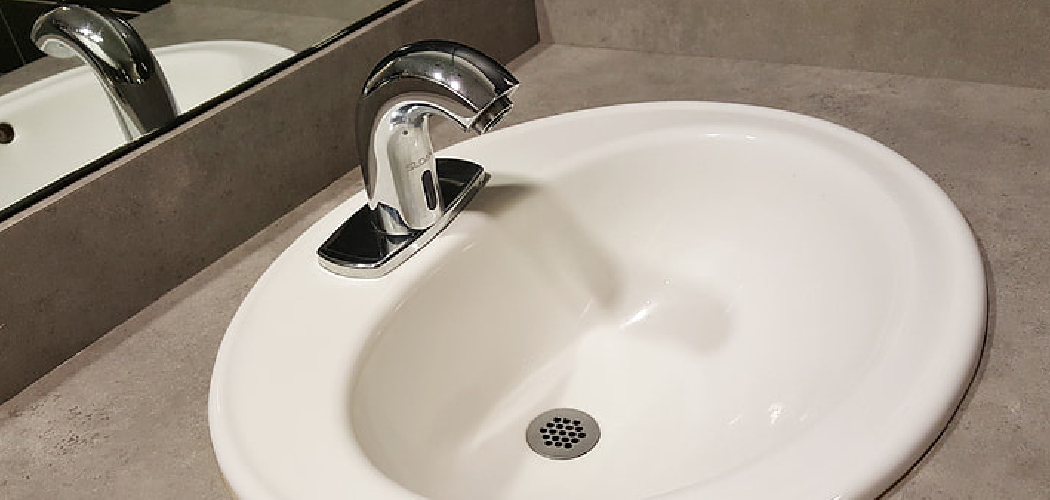Rust on bath taps can be both unsightly and unhygienic, detracting from the overall appearance of your bathroom. Over time, moisture and exposure to air can cause metal fixtures to develop rust, making it essential to address the issue promptly.
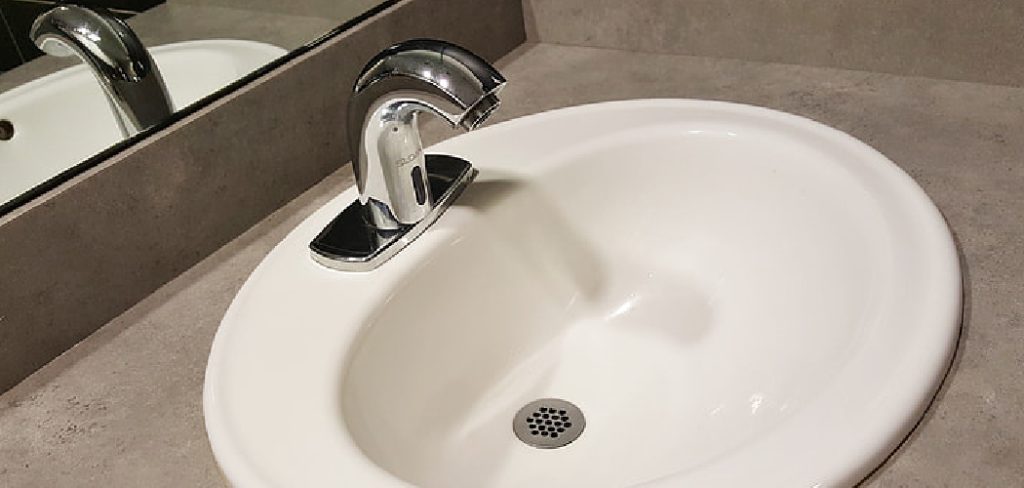
Fortunately, removing rust is a straightforward process that can be accomplished using common household items or dedicated cleaning products. This guide on How to remove rust from a bath tap will walk you through simple and effective steps to restore your bath tap to its original shine.
Why Does Rust Form on Bath Taps?
Before diving into the steps for removing rust, it’s important to understand why it forms in the first place. Bath taps are usually made of metal, such as stainless steel or chrome-plated brass. When these metals come into contact with water and oxygen (from the air), a chemical reaction occurs that results in rust.
The presence of minerals in tap water can accelerate this process, making it even more challenging to prevent and remove rust from bath taps.
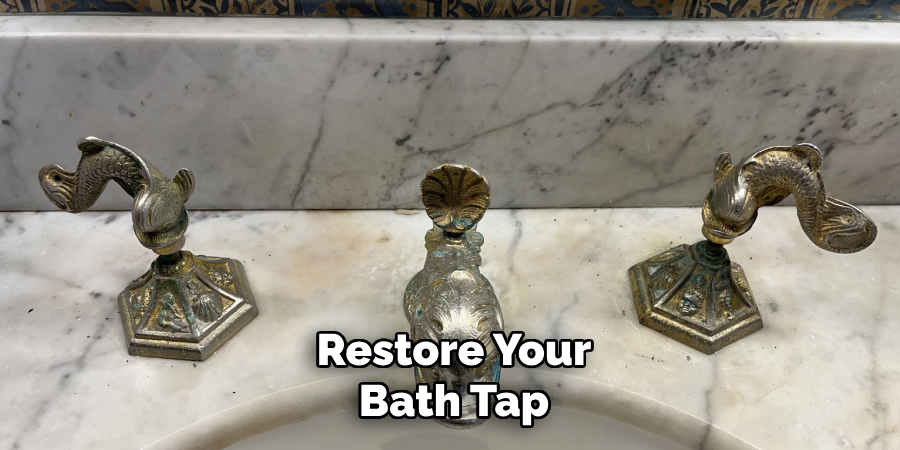
10 Simple Step-by-step Guidelines on How to Remove Rust From a Bath Tap
Step 1: Prepare Your Materials
To effectively remove rust from your bath tap, you will need:
White Vinegar:
- This mild acid is effective in breaking down rust and dissolving it.
Baking Soda:
- Also known as sodium bicarbonate, this household staple can act as a gentle abrasive to help scrub away rust.
Lemon Juice:
- The citric acid in lemon juice can help dissolve rust and leave a fresh scent behind.
Toothbrush or Soft Cloth:
- These will be used for scrubbing and applying the cleaning solutions.
Bucket or Large Bowl:
- To soak larger parts of the bath, tap the cleaning solutions.
Step 2: Remove Any Loose Rust
Before applying any cleaning solution, start by removing any loose rust from the surface of the bath tap. Use a soft cloth, toothbrush, or a non-abrasive scrub pad to gently scrub the area and dislodge any flaky rust. Be careful not to scratch the tap’s surface, especially if it’s chrome-plated, as this could lead to further damage.
This step ensures that the cleaning solutions can penetrate more effectively and target the tougher rust spots. Wipe away the debris with a clean, damp cloth before proceeding to the next step.
Step 3: Create a Rust-Removing Solution
Mix equal parts of white vinegar and baking soda to form a paste. Alternatively, you can also use lemon juice instead of vinegar for an extra boost of citric acid. The consistency should be similar to that of toothpaste.
But if you’re dealing with a larger part of the bath tap that requires soaking, mix equal parts of white vinegar and water in a bucket or large bowl. Add two tablespoons of baking soda and stir until it dissolves.
Step 4: Apply the Cleaning Solutions
For smaller areas, use a toothbrush or cloth to apply the paste onto the rusted spots. Gently scrub in circular motions for a few minutes before rinsing off with warm water.
If you’re using the soaking method, place the affected part of the bath tap in the solution and let it soak for at least 30 minutes, depending on how severe the rust is. You may need to scrub lightly afterward to remove any remaining rust.
Step 5: Use a Wire Brush for Tougher Rust
For more stubborn rust spots, you can use a wire brush to gently scrub the area. This method is best used on brass or copper bath taps where the surface can handle a slightly more abrasive approach. Be careful not to apply too much pressure, as this could scratch the tap’s surface and cause damage.
It’s also essential to use a steel or brass wire brush, as iron wire brushes can transfer iron particles onto the tap and cause further rusting.
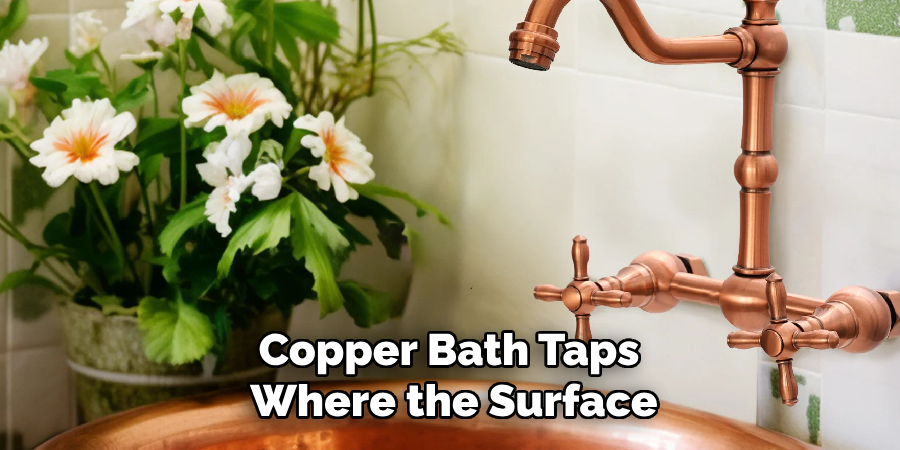
Step 6: Try Salt and Lemon Juice
If you prefer an all-natural solution, you can mix lemon juice and salt to form a paste. The citric acid in lemon juice combined with the abrasive texture of salt can help tackle tough rust spots. Apply the paste onto the affected areas, let it sit for a few minutes, then scrub and rinse off with warm water.
You can also add a little bit of vinegar or water to the mixture for added effectiveness.
Step 7: Use Rust-Removing Products
There are many commercial rust-removing products available on the market, and they can be effective in removing rust from bath taps. However, it’s essential to read the labels carefully and follow all safety precautions when using these products.
Some may require protective gear such as gloves or goggles, while others may not be suitable for certain types of metal. Always test a small area first before applying the product to the entire tap.
Step 8: Prevent Further Rusting
After successfully removing rust from your bath tap, it’s important to take measures to prevent it from happening again. Wipe down the tap after each use to remove any moisture, and avoid using harsh chemical cleaners or abrasive sponges that can damage the tap’s surface.
You can also consider investing in a shower filter or water softener to reduce the minerals in your tap water, which will help prevent rust formation.
Step 9: Regular Maintenance
Regularly inspect and clean your bath taps to catch any early signs of rust and address them promptly. This way, you can prevent severe rusting that may require more drastic measures to remove.
It’s also a good idea to clean your bath taps at least once a month with a mild cleaning solution to keep them looking shiny and new.
Step 10: Seek Professional Help if Needed
If your bath tap has extensive rusting or damage, it may be best to seek professional help. A plumber or metal restoration specialist can assess the situation and offer solutions that will effectively remove rust without causing further damage to the tap.
Following these simple guidelines on How to remove rust from a bath tap and taking preventive measures can help keep your bath taps rust-free and in good condition for years to come.
How Long Could It Take?
The amount of time required to remove rust from a bath tap can vary depending on the severity of the rust and the method chosen. For light surface rust, using household items like vinegar, baking soda, or lemon juice might take approximately 30 minutes to an hour, including preparation and scrubbing time. However, for more stubborn or deep-seated rust, additional treatments, such as multiple applications of a rust-removing solution or using a wire brush, could extend the process to a couple of hours.
If you’re soaking larger parts in a cleaning solution, this alone may require 30 minutes to a few hours, depending on the rust intensity. For severe cases where professional help is needed, the removal might take a day or more, especially if repairs or tap replacements are involved.
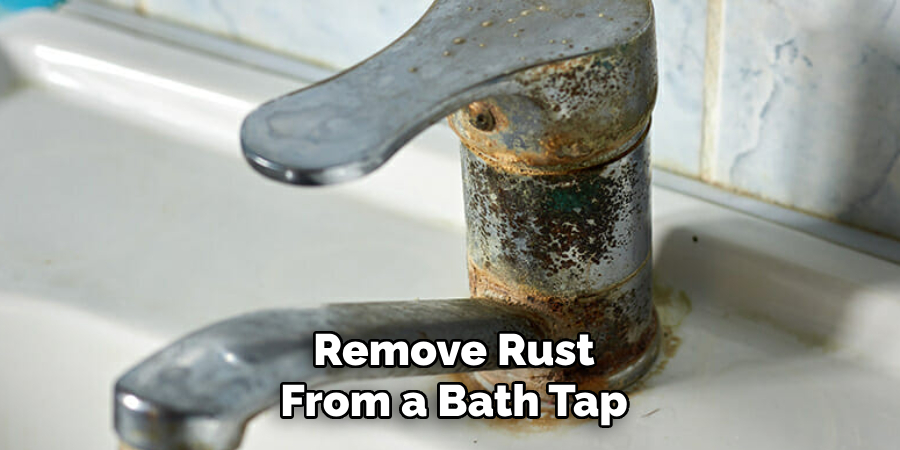
Frequently Asked Questions
Q: Can I Use Vinegar or Lemon Juice Alone to Remove Rust From My Bath Tap?
A: Yes, both vinegar and lemon juice can be effective in removing rust. However, combining them with baking soda or salt can make the solution even more potent.
Q: Will Scrubbing My Bath Tap With a Wire Brush Cause Damage?
A: It depends on the type of metal your bath tap is made of. Brass and copper can handle a gentle wire brush, but for other metals such as chrome or nickel, it’s best to avoid using a wire brush to prevent scratching.
Q: How Often Should I Clean My Bath Taps?
A: It’s recommended to clean your bath taps at least once a month with a mild cleaning solution. However, if you live in an area with hard water or notice signs of rust forming, you may need to clean them more frequently. Remember to also regularly wipe down the taps after each use to prevent moisture build-up.
Q: Can I Use Rust-Removing Products on All Types of Bath Taps?
A: No, it’s essential to read the labels and instructions carefully before using any rust-removing products. Some may not be suitable for certain types of metal or may require additional safety precautions. Always test a small area first before applying the product to the entire tap.
Q: How Can I Prevent Further Rusting on My Bath Tap?
A: To prevent further rust formation, it’s important to wipe down your bath tap regularly after each use to remove any moisture. Avoid using harsh chemical cleaners or abrasive sponges that can damage the tap’s surface. You can also consider investing in a shower filter or water softener to reduce the mineral content in your tap water. Regular maintenance and prompt addressing of any signs of rust are also crucial in preventing severe rusting.
Q: Should I Seek Professional Help for Severe Rust on My Bath Tap?
A: If your bath tap has extensive rusting or damage, it’s best to seek professional help from a plumber or metal restoration specialist. They have the expertise and tools to effectively remove rust without causing further damage to the tap. Additionally, it’s always better to address severe rusting as soon as possible before it causes irreparable damage.
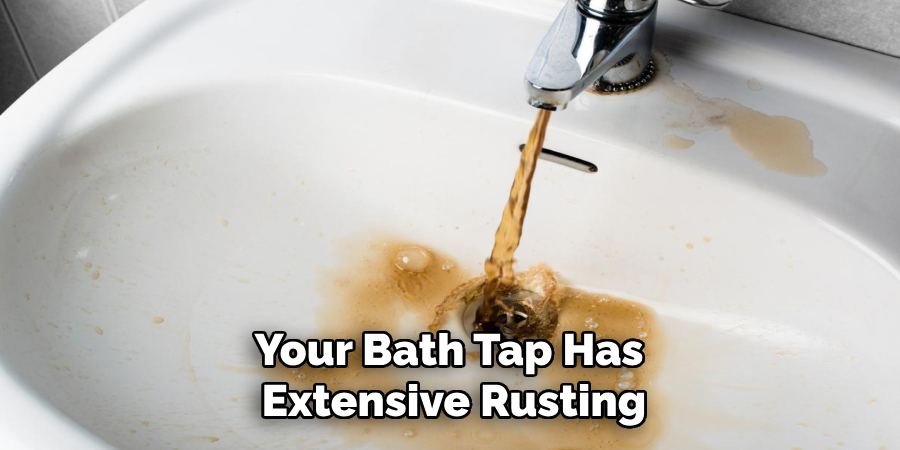
Conclusion
While rust on bath taps may seem like an unavoidable problem, there are simple and effective ways to remove it and prevent it from happening again. By following these step-by-step guidelines on How to remove rust from a bath tap, you can restore your bath tap to its original shine and keep it looking new for longer. Remember to always use caution when applying cleaning solutions and seek professional help if needed for severe cases of rusting.
With regular maintenance and preventive measures, you can keep your bath taps sparkling and free from rust. So, don’t let rust take over your bathroom fixtures – take action today and enjoy a rust-free bathing experience! Happy cleaning!

